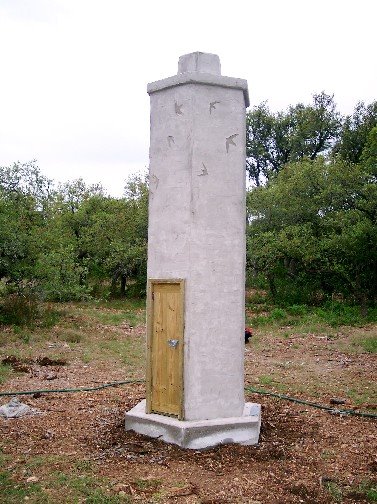by Elsa Johnson
Back in the day before people caged off their chimneys there were probably fewer mosquitos.
What??? You say… what possible connection????
The answer? Chimney swifts/chimney ‘swallows’.
Chaetura pelagica, voracious eaters of all flying insects, like mosquitos. These birds, native to the Americas, spend the winter (as I would like to do) in South America (northwestern countries), but breed in North America during our summers. Their range is from the Rockies eastward to the Atlantic and northward into lower parts of Canada. Like all swifts, they are incapable of perching, but instead cling vertically to surfaces. And this is where chimneys come in.
A swift spirals down to its roost opening from above. Originally these birds roosted and nested in trees. While they are diurnal foragers, able to stay afloat in the sky for hours, the time I am most aware of them is in the liminal hours of dawn and dusk. They are easily recognized, with their strange short, neck-less bodies, long slender wings, swift erratic flight and chittering call, but they are also easily mistaken for swallows (hence the name confusion). Able to drink and bath on the wing, they are one of the swiftest of birds.
They have extremely acute vision and interestingly, can focus with one eye or both eyes, and, like our native whippoorwill, which they somewhat resemble, they have a huge mouth gape — the better to eat you, little flying insect – but they are sociable rather than solitary, and many birds – sometimes hundreds – will share a roost. In that roost there is only one breeding pair, mated for life.
Although originally cavity-in-tree dwellers, since the arrival of European colonists – and chimneys – these birds now almost exclusively use chimneys (and air shafts, isolated corners in lightly used buildings, and the walls of cisterns and wells). Here’s the catch, however: today many of us cage our chimneys, thus preventing chimney swifts/swallows from using them.
In 2010 the International Union for the Conservation of Nature changed this bird’s status from Least Concern to Near Threatened. Its population has declined precipitously across the majority of its range. The causes of its population decline are unclear. There may be contributing factors besides loss of roosts. In the U.S, the chimney swift is protected and neither birds nor nests can be removed from chimneys.
How can you help? You can build a chimney ‘swallow’ tower.
 This tall slender structure offers an alternative to chimneys. It is usually placed to allow easy maneuverability to descending birds, in an open field, or in a yard, in an open area…. but could also be placed, it seems to me, on a flat roof or deck. They can be big or small. As with chimneys, some maintenance is required. You can find plans on line; look for chimney swift houses.
This tall slender structure offers an alternative to chimneys. It is usually placed to allow easy maneuverability to descending birds, in an open field, or in a yard, in an open area…. but could also be placed, it seems to me, on a flat roof or deck. They can be big or small. As with chimneys, some maintenance is required. You can find plans on line; look for chimney swift houses.
Wonderful post, Elsa! I think there is a roost site somewhere in the vicinity of Oxford Elementary in Cleveland Heights and I’m sure that Common Nighthawks are nesting on a flat roof somewhere in that area as well.
Judy Semroc, a conservation specialist for the the Cleveland Museum of Natural History, has a swift tower on her property and has gotten wonderful photos of nesting Chimney Swifts. She does an excellent program on Chimney Swift habitats. If you see that she’s presenting it somewhere, you’ll definitely want to go.
Elsa, interesting to learn about Swifts. Tom and I think the mostly abandoned house next to us has Chimney Swifts nesting. Only one mating pair? I wonder how that evolved? I also wonder how many Swifts’ nests got burned up in the early days, when people used fireplaces year round??